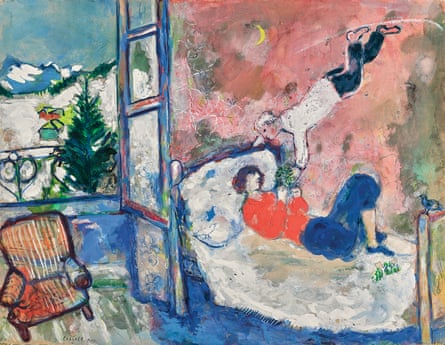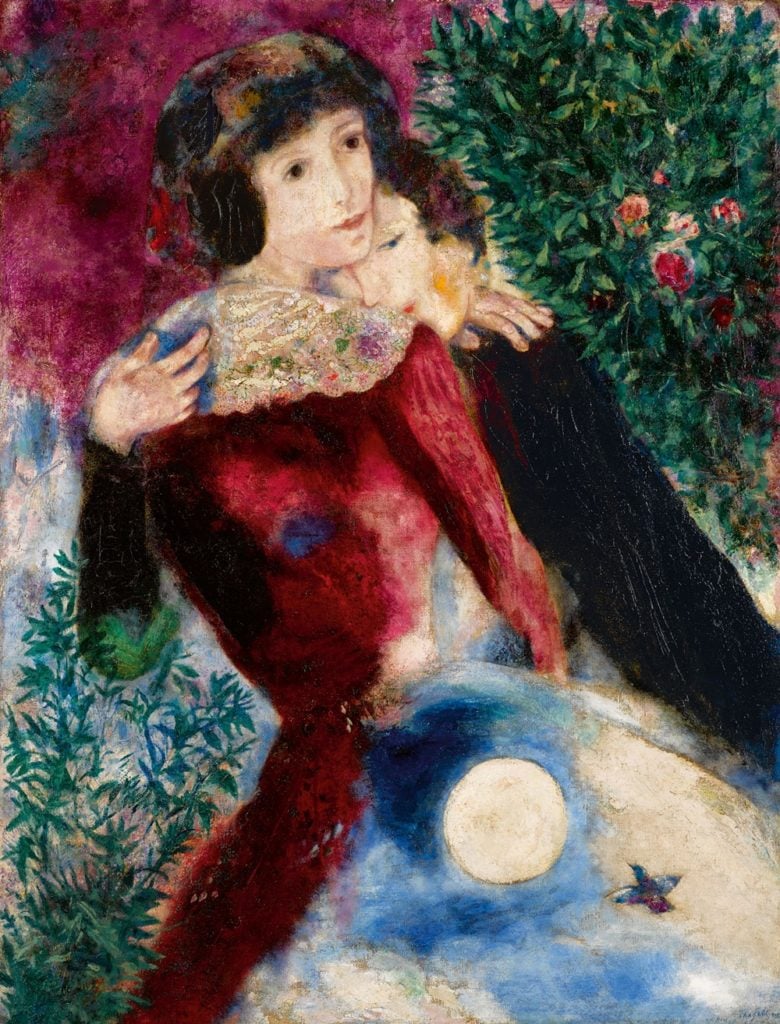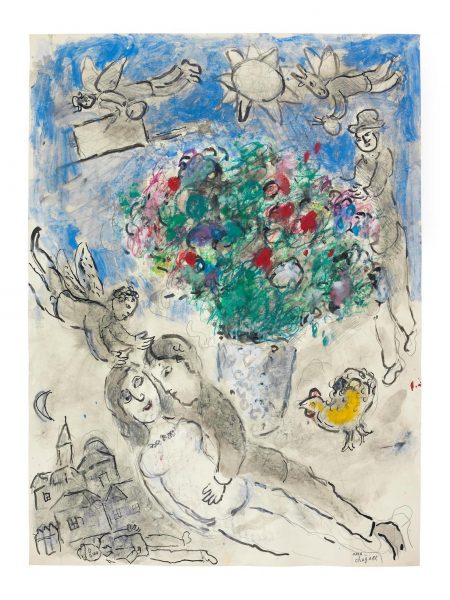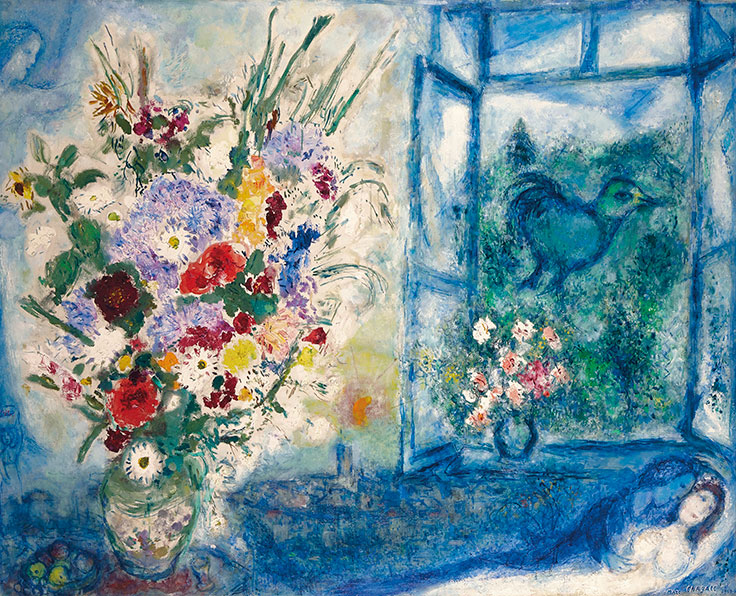Also see Marc Chagall at Auction
Phillips - Marc Chagall’s Le Père
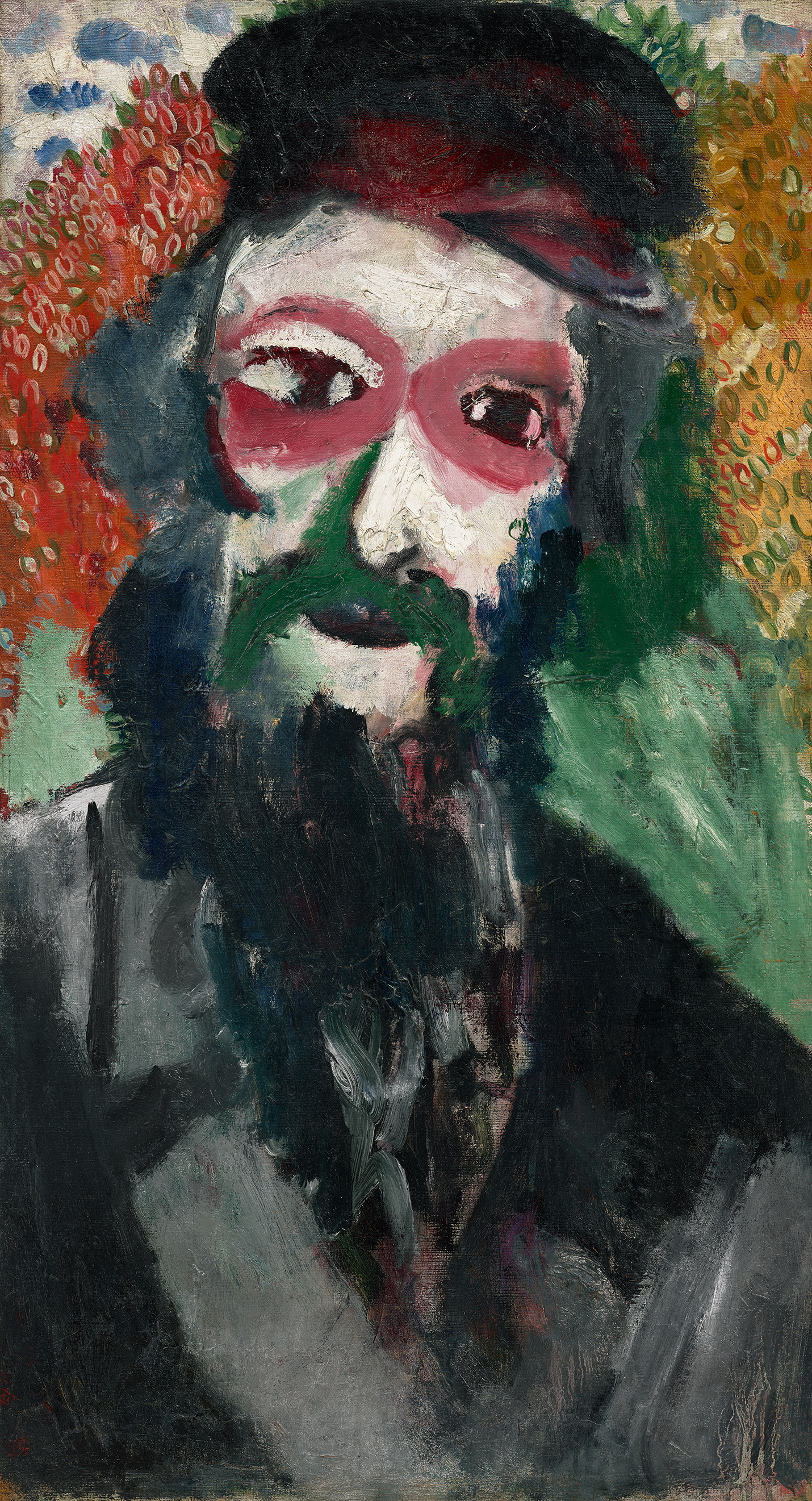
Marc Chagall
Le Père, 1911
Estimate: $6-8 Million
On 15 November, Phillips will offer Marc Chagall’s Le Père in the New York Evening Sale of 20th Century & Contemporary Art. Executed in 1911, during a transformative period in the artist’s career, the painting is among fifteen works of art that the French Government have restituted earlier this year — part of an ongoing effort to return works in its museums that were wrongfully seized by the Nazi Party during World War II. A long-treasured part of the collection of David Cender, a musical instrument-maker from Łódź, Poland, the work was taken from him in 1940 before he was sent to Auschwitz with his family. By 1966, it had been reacquired by Chagall himself, who held a particular affinity for the painting, as it portrays his beloved father. In 1988, the Musée national d’art moderne, Centre national d’art et de culture Georges-Pompidou in Paris received the painting by dation from Chagall’s estate. Estimated at $6-8 million, this is the first work from this group of fifteen restituted artworks to appear at auction.
Jeremiah Evarts, Deputy Chairman, Americas, and Senior International Specialist, 20th Century & Contemporary Art, said, “Phillips is honored to play a role in the incredible journey that this painting has taken over the last century. Chagall’s legacy is vital to the history of Western art, with Le Père standing as a masterwork within the art historical canon. The heart-wrenching and compelling history of the painting after its completion, all leading to the wonderful news of its return to the Cender Family makes the story of Le Père all the more fascinating. We commend the French government for their dedication in returning such important works in their collection to the families of their rightful owners.”
Le Père is a rare, dynamic portrait which signifies the artist’s pivotal transition from art student in Saint Petersburg to one of the defining figures of European Modernism. During the winter of 1911-1912, Chagall moved into La Ruche, an artists’ commune on the outskirts of Montparnasse. The works he created over the next three years are among the most highly regarded of his career, with his portraits bearing particular significance. Throughout his lifetime, Chagall revitalized the inherited traditions of portrait painting. He painted dreamy and fantastical portraits of lovers, religious figures, villagers, and his beloved family throughout his seven-decade career. Le Père is an intimate portrait of the artist’s father Zahar, a quiet and shy man who spent his entire life working in the same manual labor job. Portraits of the artist’s father are rare within Chagall’s oeuvre. Far from the generalized symbols of lovers that dominated much of his later paintings, this early work is a remarkably personal and heartfelt depiction.
The early owner of this painting, David Cender, was a prominent musical instrument maker in Łódź, Poland who created pieces of the highest class for the eminent musicians of the era, as well as being a musician and music teacher in his own right. In 1939, David married Ruta Zylbersztajn and soon after their daughter Bluma was born. Prior to 1939, 34% of Łódź's 665,000 inhabitants were Jewish, and the city was a thriving center of Jewish culture. In the spring of 1940, David Cender and his family were forced to leave their home and move into the ghetto, leaving behind numerous valuable possessions including their collection of artwork and musical instruments. While David survived the war, his wife, daughter, and other relatives were killed at Auschwitz.
Chagall reacquired the work by 1966 and it remained in his personal collection through the remainder of his life. In 1988, Musée national d’art moderne, Centre national d’art et de culture Georges-Pompidou in Paris received by dation from the Chagall estate Le Père along with 45 paintings and 406 drawings and gouaches. Ten years later, the work was deposited into the Musée d'art et d'histoire du Judaïsme in Paris, where it was been on view for twenty-four years.
Earlier this year, on 25 January 2022, the French National Assembly unanimously passed a bill approving the return of the fifteen works of art; the bill was then passed by its Senate on 15 February. The Minister of Culture, Roselyne Bachelot, praised the decision saying that not restituting the works was “the denial of the humanity [of these Jewish families], their memory, their memories.” The historic passing of this bill marks the first time in more than seventy years that a government initiated the restitution of works in public collections looted during World War II or acquired through anti-Semitic persecutions.
On April 1, 2022, Le Père was returned to the heirs of David Cender by the Parlement français in Paris.
Coming to auction for the first time, Le Père is a treasured and rare example from the artist’s early oeuvre. It’s inclusion in this landmark restitution signifies a historic moment in cultural history.
Christie’s The group is led by Le peintre et les mariés aux trois couleurs (1984, estimate: £1,000,000-1,500,000, illustrated above, right).

Unseen since 1985 In this beautiful and tender evocation of Chagall’s most beloved subject matter, his wife Bella, the artist depicts himself presenting her with a branch of mistletoe, a symbol of long life and health. The joyous work was painted in the 1920s, a happy and peaceful time for the family, and as they travelled through France his works became increasingly brilliant and luminous. Having never previously been offered at auction, it will go on public view for the first time since it was exhibited in 1985.
|
| ||
 | ||
A brilliant wash of emerald green and crimson red, Fleurs de St. Jean-Cap-Ferrat belongs to a body of work created by Marc Chagall following World War II, featuring several motifs that would remain central to Chagall’s late oeuvre (estimate $2.5/3.5 million). Lighter, renewed tapestries of couples, flowers and animals began to replace Chagall’s darker, religious and Holocaust-related works. The bottom portion of the canvas is devoted to the placid coastline of the work’s titular town, Saint-Jean-Cap-Ferrat, situated on a picturesque peninsula southeast of Nice, which served as the locus of Chagall’s artistic rebirth in 1949. Autour de 'La Revolution 1937', a remarkable, and joyous work painted in the aftermath of the Second World War by the Russian-French artist Marc Chagall, leads Bonhams Impressionist and Modern Art Sale in London on Thursday 28 February. It is estimated at £300,000-500,000. The 1917 Revolution and subsequent Russian Civil War were key events in Chagall's artistic development. 20 years later – having moved to Paris in 1923 from his home town of Vitebsk – he embarked on his Révolution series. Over several, similarly structured, works, Chagall juxtaposes political upheaval, represented by the revolutionaries on the left side of the canvases, with artistic and domestic harmony in the form of musicians, roof tops, animals and lovers on the right. Separating these two worlds, the figure of Lenin is shown performing a handstand on a table, at which sits a rabbi contemplating the Torah. Chagall returned to the theme in the years following World War Two. Being Jewish, he had fled France after the German invasion of 1940, and lived in America until 1948 when he returned to the country he saw as home. Autour de 'La Revolution 1937' was painted at some point between 1945-1950, and is a reflection on the earlier series (the title translates as Around 'The 1937 Revolution'.) The tone is markedly apolitical and lighter. The figure of Lenin has been replaced by an acrobat – a favorite Chagall motif - and the rabbi is now an elderly violinist. The revolutionary crowd has shrunk to a small group of banner-waving protestors. Bonhams Global Head of Impressionist and Modern Art India Phillips commented: "After the Second World War, Chagall made a deliberate decision to emphasize beauty and peace. From exile in New York, he had followed the fate of European Jewry with mounting horror. Unlike many of his contemporaries, however, he chose to process his reaction to this unimaginable suffering through determined and conscious optimism."  Marc Chagall, La Tour Eiffel, 1929. $6-9 million | ||

